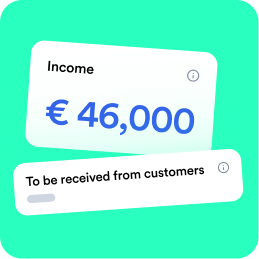Sham self-employment is a complex issue that can affect the careers of many self-employed in secondary occupation in Belgium. Recognising the characteristics and limits of false self-employment is important to avoid legal problems and sanctions. This issue affects not only freelance work, sole proprietors and salaried employment, but also the interaction with social inspection and the Labour Relations Act.
In the course of this article, we examine the definition of false self-employment, how to avoid it and what legal consequences may be involved.
The meaning of false self-employment 🕵️
Sham self-employment in Belgium is characterised by employees having self-employed status but actually working under the authority of an employer, which would normally mean salaried employment with a salary. Four criteria are used to determine whether someone is actually self-employed [2]:
1️⃣ Freedom of cooperation form: The ability of parties to choose their form of cooperation.
2️⃣ Freedom to organise working hours: The self-employed person can organise his/her own working hours.
3️⃣ Freedom to organise work: The self-employed person has the freedom to organise his/her work as he/she sees fit.
4️⃣ Ability to exercise hierarchical control: The self-employed person is not controlled by the client.

Did you know.
The Social Security Servicechecks whether certain self-employed people are not actually sham self-employed. If this turns out to be the case, they can demand a review of social security contributions.
How to avoid false self-employment as a self-employed in secondary occupation? 🔎
To prevent false self-employment as a self-employed in secondary occupation, there are some steps you can take:
- Determine your work status in advance:
- Determine in advance whether you will perform a task as a self-employed person or an employee.
- Use model agreements:
- A model agreement can help clarify that you are not working as an employee but as a self-employed person.
- Keeping records in order:
- Work for multiple companies and keep records from rejected offers to prove your self-employment.
- Self-employment partnership agreement:
- Written communication or a self-employed collaboration agreement can help prove self-employment.
- Written communication or a self-employed collaboration agreement can help prove self-employment.

Tip:
By following the above steps, you can minimise the risk of false self-employment and protect yourself from possible legal consequences.
Legal consequences and sanctions 💶
The legal consequences and sanctions of false self-employment can be far-reaching for both the self-employed person and the client:
- Recovery of social security contributions: If false self-employment is established, social security contributions can be recovered retroactively for up to three years, with a 10% increase plus interest.
- Tax obligations: The Belgian tax authorities can demand payment of not paid withholding tax from the employer in cases of sham self-employment.
- Financial consequences for the client:
- If a self-employed person is classified as an employee, the financial consequences for the principal are significant, including payments of overdue social security contributions, possibly with additional penalties and interest.
- The employee may also be entitled to a permanent contract and continue to work for the client in the long term.
- Loss of tax benefits: As a self-employed person, you lose tax benefits associated with your self-employed status if you are classified as an employee.
Conclusion
The discussion around false self-employment among self-employed in secondary occupation is an important issue that deserves attention within the Belgian employment context. By closely monitoring the criteria for false self-employment and by taking proactive measures such as using model contracts and keeping careful records, self-employed workers can greatly improve their legal position and minimise potential risks.
FAQs
What does false self-employment entail and why is it a problem?
Sham self-employment is illegal and serves two purposes: protecting the self-employed person from exploitation by the client and preventing social fraud. The advantage for the client in false self-employment is that he does not have to pay the social security contributions normally due in salaried employment.
How can I avoid false self-employment as an employer?
As an employer, you can avoid false self-employment by giving your contractors sufficient autonomy in how they perform their work. This means that they can make independent decisions about the way of working, the locations and the times when the work is performed.
What are the possible consequences of false self-employment?
The consequences of false self-employment can be far-reaching, including having to pay unpaid contributions and fines. It is therefore essential that entrepreneurs recognise the signs of false self-employment and protect themselves from the risks it entails.

Tip:
Feel free to follow a free course or online webinar so that you never get into trouble with your sole proprietors’ accounts!
















